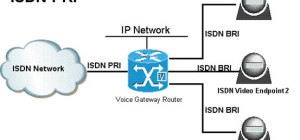 It is a brave new world for many tech industries as they began to expand following the recession and invest in the latest innovations. Telecommunication companies, which have to deal with far-flung networks and a broad number of services, are no exception to this rule. However, because the telecom industry is so intertwined with government guidelines and Internet service expectations, they are often influenced the most by new trends in technology. Here are several movements that are slowly changing the landscape for telecom businesses, requiring new approaches, marketing strategies, and investment on all sides. 2013 promises to be an exciting year with developments like:
It is a brave new world for many tech industries as they began to expand following the recession and invest in the latest innovations. Telecommunication companies, which have to deal with far-flung networks and a broad number of services, are no exception to this rule. However, because the telecom industry is so intertwined with government guidelines and Internet service expectations, they are often influenced the most by new trends in technology. Here are several movements that are slowly changing the landscape for telecom businesses, requiring new approaches, marketing strategies, and investment on all sides. 2013 promises to be an exciting year with developments like:
International Mobility: The largest telecom companies are starting to look more and more overseas, especially at markets that are not as saturated as the United States when it comes to data growth. Nowhere is this trend more obvious than in mobile communication and mobile management. Global corporations are looking for providers that can meet their international needs, but finding few answers. As a result, larger providers have begun acquisition and expansion strategies to push out into foreign markets and offer solutions to such corporations. International mobility requires not only significant investment, but also frequent alterations to make room for international standards and government guidelines.
Video Caching: Video caching refers to storing content - specifically, rich media like video - on appliances within the provider system. This new use of the technology allows companies to send video on to end-users at maximum speed and quality. Providers, notably Cablevision, are growing interested in this technology for a couple different reasons. First, video caching can help solve streaming issues that give providers a bad name when it comes to using video services like Netflix. Second, when services like Netflix chart the speeds of providers streaming their video, video caching provides a boost in speed numbers that earn providers higher ratings.
Alignment with BYOD Strategies: BYOD stands for Bring Your Own Device, an enterprise trend that allows employees to use their own devices for work purposes, but under guidelines that control what apps they download and the type of security they utilize. As BYOD strategies reach a greater level of acceptance across all industries, telecom companies must change their marketing and service tactics to match. Full business plans that include phones will be replaced by more flexible options that offer individual service but security and app control for companies to use alongside the plan.
Fixed Line Reworking: While mobile is growing in favor thanks to LTE and 4G capabilities, fixed lines remain both necessary and popular, particularly for businesses. Providers will be dividing strategies on this account. On one side, they will be boosting 4G quality and speeds to match fixed line services. On the other side, they will be reworking fixed lines to gain higher speeds and quality of service. The rise of Google Fiber and similar projects has already had an effect on how fixed lines are seen.
Frequency Experimentation: Thanks to new openings in the “white space” frequencies and increased interest in home automation, telecom companies can also be expected to experiment more with other bands, developing unique communication capabilities for specific devices and pushing data into new frequencies. This both increases capabilities and cuts down on certain wireless costs, while allowing providers to move into the automation/sensor market that is already forming the Internet of Things.
Data Meets Pricing: Big Data is certainly having an effect on telecom companies already, but where it promises the most impact is in the controversial area of pricing. Providers will be able to use Big Data analytics to measure Internet use and back up their pricing decisions…and as they start linking this information to pricing models, it will become an expected practice. Customers will begin to demand evidence that supports their local pricing before making purchasing decisions.
Published on behalf of Mr. Shannon Merton-a professional blogger that provides consumers with information on broadband service providers. She writes for Quotetelecom.







